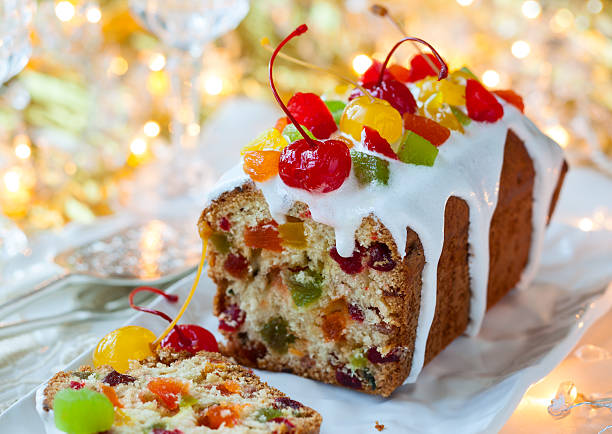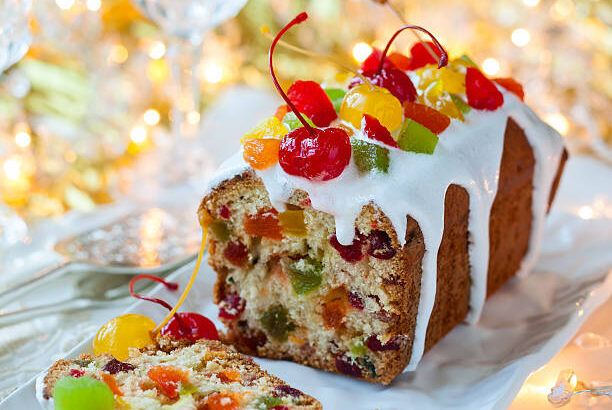Exploring the Art of Fruit Soaking for Perfect Fruitcakes

Exploring the Art of Fruit Soaking for Perfect Fruitcakes
Fruitcakes, with their rich blend of flavors and moist texture, are a beloved dessert during festive seasons and special occasions. One key element that contributes to the taste and texture of a remarkable fruitcake is the art of soaking the fruits. Soaking dried fruits before incorporating them into the cake batter allows them to absorb flavors, plump up, and infuse the cake with a delightful taste. Let’s delve into the details of how long fruits should be soaked for fruitcake production to achieve that perfect balance.
Table of Contents
1. Selecting the Ideal Mix of Fruits
The first step in the fruit soaking process is choosing the right combination of dried fruits. Popular choices include raisins, currants, sultanas, apricots, candied peel, and cherries. The blend of fruits will determine the complexity of flavors in your fruitcake.
2. Preparing the Fruits for Soaking
After selecting the fruits, ensure they are clean and dry. If the fruits are large, it’s advisable to chop them into smaller, uniform pieces. This preparation allows for better soaking and even distribution of flavors.
3. Choosing the Perfect Soaking Liquid
The choice of soaking liquid significantly impacts the final taste of the fruitcake. Common options include brandy, rum, whiskey, or a combination of these alcoholic spirits. For a non-alcoholic version, fruit juice or tea can also be used. The soaking liquid should complement the flavors of the dried fruits and add an extra dimension to the cake.
4. Determining the Soaking Duration
The crucial question is: How long should the fruits be soaked? The soaking duration typically ranges from a minimum of 24 to 48 hours. During this time, the dried fruits absorb the liquid, allowing them to swell and soften. For those seeking a more intense flavor, longer soaking periods, even extending to a few weeks, can be chosen. Longer soaking times contribute to a richer, more deeply flavored fruitcake.
5. Stirring for Even Absorption
While the fruits are soaking, it’s a good practice to stir them occasionally. This ensures that the soaking liquid is evenly distributed among the fruits, enhancing the absorption process.
Incorporating Soaked Fruits into Your Cake Batter
Once the soaking process is complete, the soaked fruits, along with any remaining soaking liquid, are ready to be integrated into your fruitcake batter. The result is a cake infused with the delightful flavors and moisture from the soaked fruits.
In conclusion, the duration for soaking fruits in fruitcake production is a matter of personal preference and the level of flavor complexity desired. Experimentation with soaking times and soaking liquids can lead to the creation of a fruitcake that perfectly suits your taste. So, embrace the art of fruit soaking and elevate your fruitcake to a whole new level of deliciousness.
Fruitcakes, with their rich blend of flavors and moist texture, are a beloved dessert during festive seasons and special occasions. One key element that contributes to the taste and texture of a remarkable fruitcake is the art of soaking the fruits. Soaking dried fruits before incorporating them into the cake batter allows them to absorb flavors, plump up, and infuse the cake with a delightful taste. Let’s delve into the details of how long fruits should be soaked for fruitcake production to achieve that perfect balance.
- Selecting the Ideal Mix of Fruits
The first step in the fruit soaking process is choosing the right combination of dried fruits. Popular choices include raisins, currants, sultanas, apricots, candied peel, and cherries. The blend of fruits will determine the complexity of flavors in your fruitcake.
- Preparing the Fruits for Soaking
After selecting the fruits, ensure they are clean and dry. If the fruits are large, it’s advisable to chop them into smaller, uniform pieces. This preparation allows for better soaking and even distribution of flavors.
- Choosing the Perfect Soaking Liquid
The choice of soaking liquid significantly impacts the final taste of the fruitcake. Common options include brandy, rum, whiskey, or a combination of these alcoholic spirits. For a non-alcoholic version, fruit juice or tea can also be used. The soaking liquid should complement the flavors of the dried fruits and add an extra dimension to the cake.
- Determining the Soaking Duration
The crucial question is: How long should the fruits be soaked? The soaking duration typically ranges from a minimum of 24 to 48 hours. During this time, the dried fruits absorb the liquid, allowing them to swell and soften. For those seeking a more intense flavor, longer soaking periods, even extending to a few weeks, can be chosen. Longer soaking times contribute to a richer, more deeply flavored fruitcake.
- Stirring for Even Absorption
While the fruits are soaking, it’s a good practice to stir them occasionally. This ensures that the soaking liquid is evenly distributed among the fruits, enhancing the absorption process.
Incorporating Soaked Fruits into Your Cake Batter
Once the soaking process is complete, the soaked fruits, along with any remaining soaking liquid, are ready to be integrated into your fruitcake batter. The result is a cake infused with the delightful flavors and moisture from the soaked fruits.
In conclusion, the duration for soaking fruits in fruitcake production is a matter of personal preference and the level of flavor complexity desired. Experimentation with soaking times and soaking liquids can lead to the creation of a fruitcake that perfectly suits your taste. So, embrace the art of fruit soaking and elevate your fruitcake to a whole new level of deliciousness.


